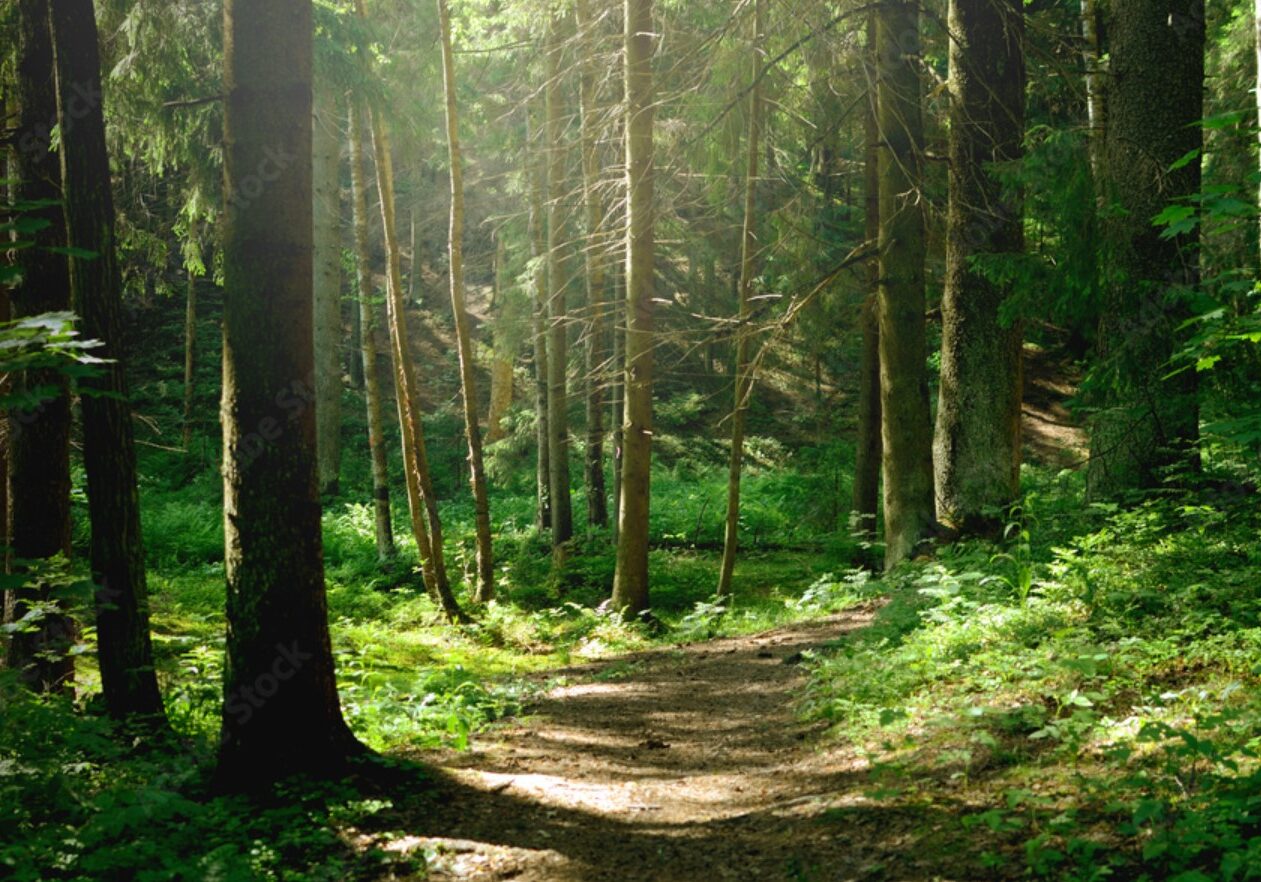
What is Forest bathing?
The Japanese expression shinrin-yoku literally translates to 'forest bathing. ' It invites us to take a break from our busy lives and connect with nature. This simple act has gradually gained popularity in recent years, owing largely to its proven health benefits.
Forest Bathing is "Not Hiking"
While hiking involves moving purposefully across terrain, forest bathing isn’t about following a defined route. Bolton’s forest therapy walks, which last about 2-1/2 hours, may span only about one kilometre. “This experience is much slower,” she says. “The guide will really slow down the participants and get them to interact with the forest with all their senses.” Rather than the destination, the point is to focus on the details of the journey.
But unlike an interpretive nature walk, the guide’s role isn’t to explain the flora and fauna. Rather, the guide facilitates the contemplative experience, offering participants “invitations” to interact with the forest in a meaningful and healing way.

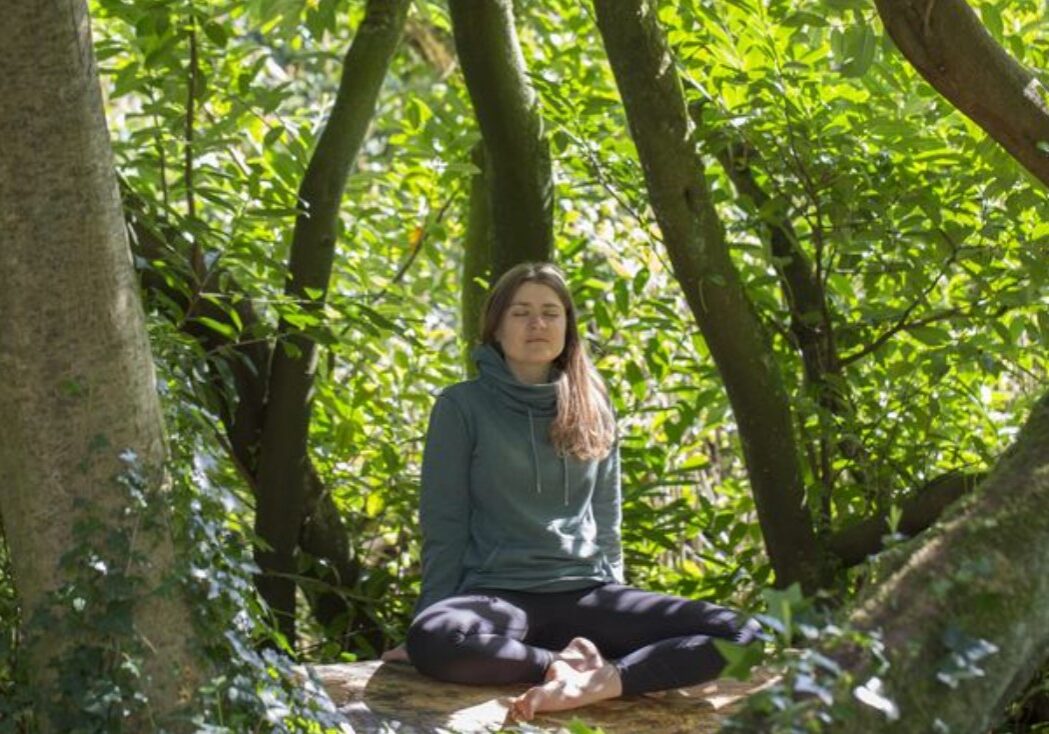
For example, participants will be invited to use their eyes, paying attention to what’s in motion. “Sometimes there are lots of birds flying, and that’s easy to see. Sometimes it’s the wind blowing—the slightest breeze is making one little leaf twirl in circles,” she explains.
Other times participants will focus on sound or touch. “How many of us really slow down and feel the different textures in the forest?” she asks. Even the sense of taste is stimulated. At the end of the session, there’s a tea ceremony that highlights the edible plants of the forest such as lemon balm, licorice root, or a hemlock tree’s citrusy new spring growth.
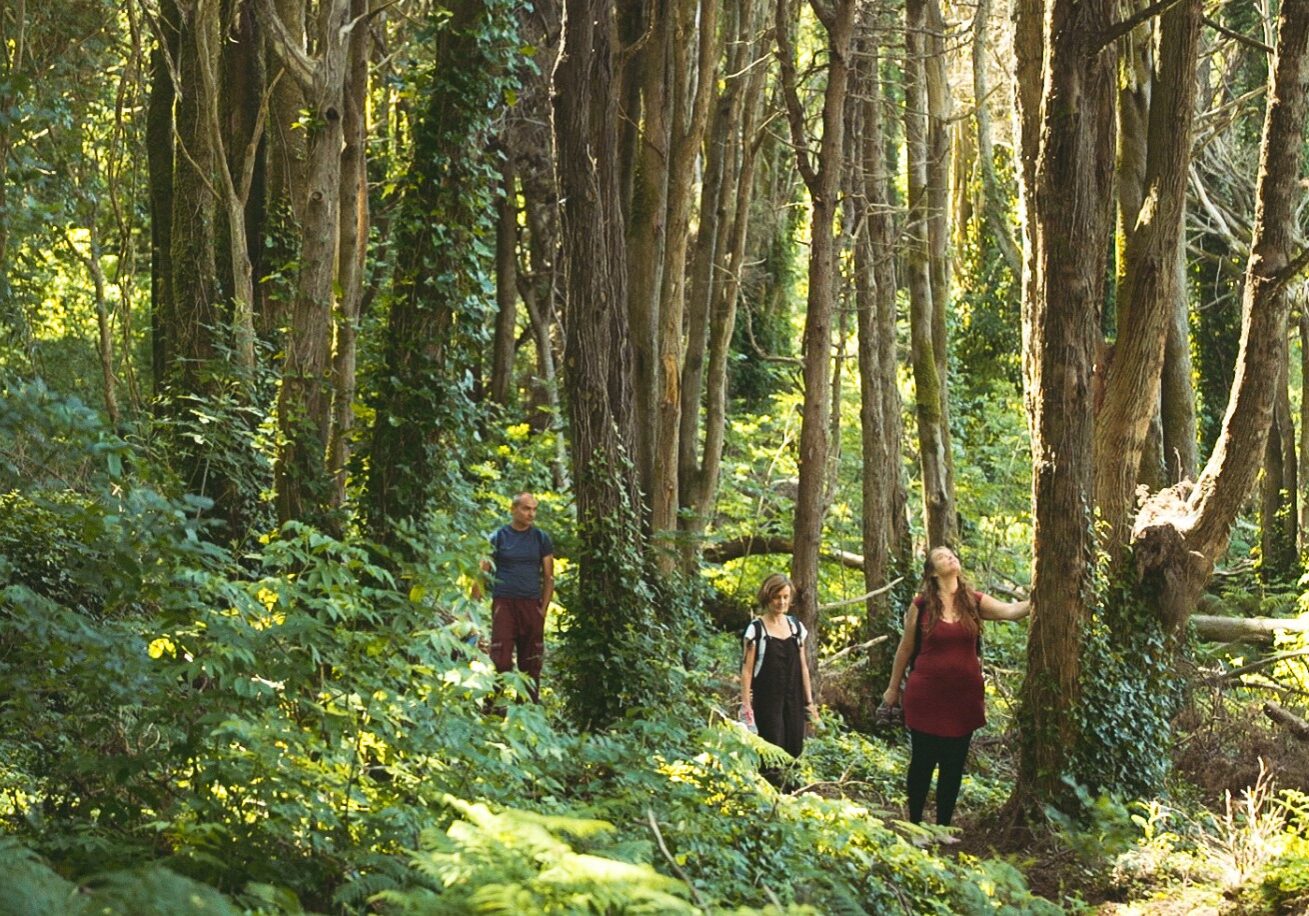
Forest Bathing is Both a Personal and a Shared Experience
While some people liken forest bathing to meditation, it’s not necessarily a solitary experience. It is, however, a mindful one, with a similar practice of slowing down and really being in the moment.
But sharing is also part of the experience. Bolton guides people both one-on-one and in small groups. “You want a small enough group that there’s that feeling of intimacy,” she says. Participants have time to contemplate the forest on their own and with others. “It makes it a much richer experience,” she says. “You’re hearing and seeing things through what they share that you didn’t notice yourself. There’s a lot of connection and pleasure in sharing forest therapy with other people.”
Forest Bathing Can Be Guided or Independent
You don’t need a guide to practice forest therapy; some people are quite effective in practising solo. However, a guide can help facilitate the process by controlling the pace and offering invitations to experience the forest in new ways. “People say they are grateful that they had a guide to slow them down because they never would have slowed themselves down enough to experience the detail.”

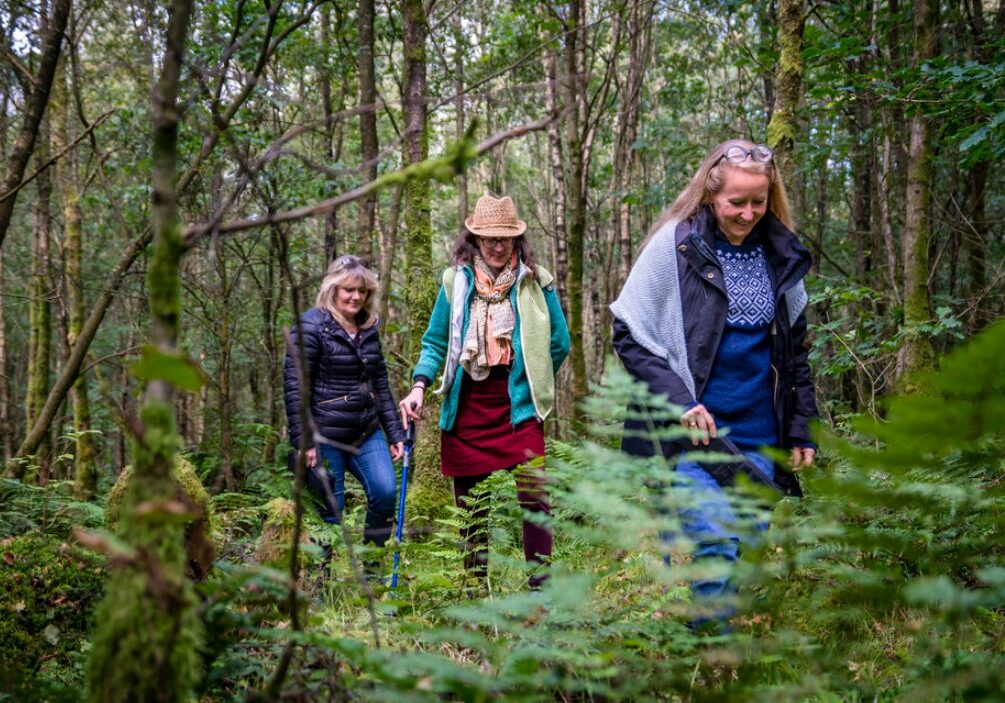
Some people benefit from a guide in the same way they might benefit from a personal trainer at the gym. “Sometimes we have to make a commitment to other people in order to make a commitment to ourselves,” she explains. “Sometimes when we have a coach or guide meeting us at a certain time, we are more likely to go out and do this thing we know is beneficial for us.”
Bolton emphasizes, however, that a forest therapy guide is not a therapist. “The forest itself is the therapist,” she says. “The forest does all the work. The guide simply opens the door to the forest to help connect the forest with the person.”
BENEFITS OF
FOREST BATHING MEDITATION
The simple act of sitting and focusing on your breath can be quite difficult if you are not in the proper frame of mind. A large number of people give up meditation due to a frustrating experience in their initial attempts. That’s why the role of a good teacher becomes so important in this journey of learning mindfulness and meditation.
However, forest bathing makes it easy to reach a peaceful state of mind. By paying attention to our senses and moving in the forest mindfully, we not only get all the benefits of meditation for our mind, but also boost our immunity and create good health for our body. And the beautiful bonus is the friendships these activities help us cultivate. It’s because in forest bathing we are guided by the greatest teacher of all – Nature.

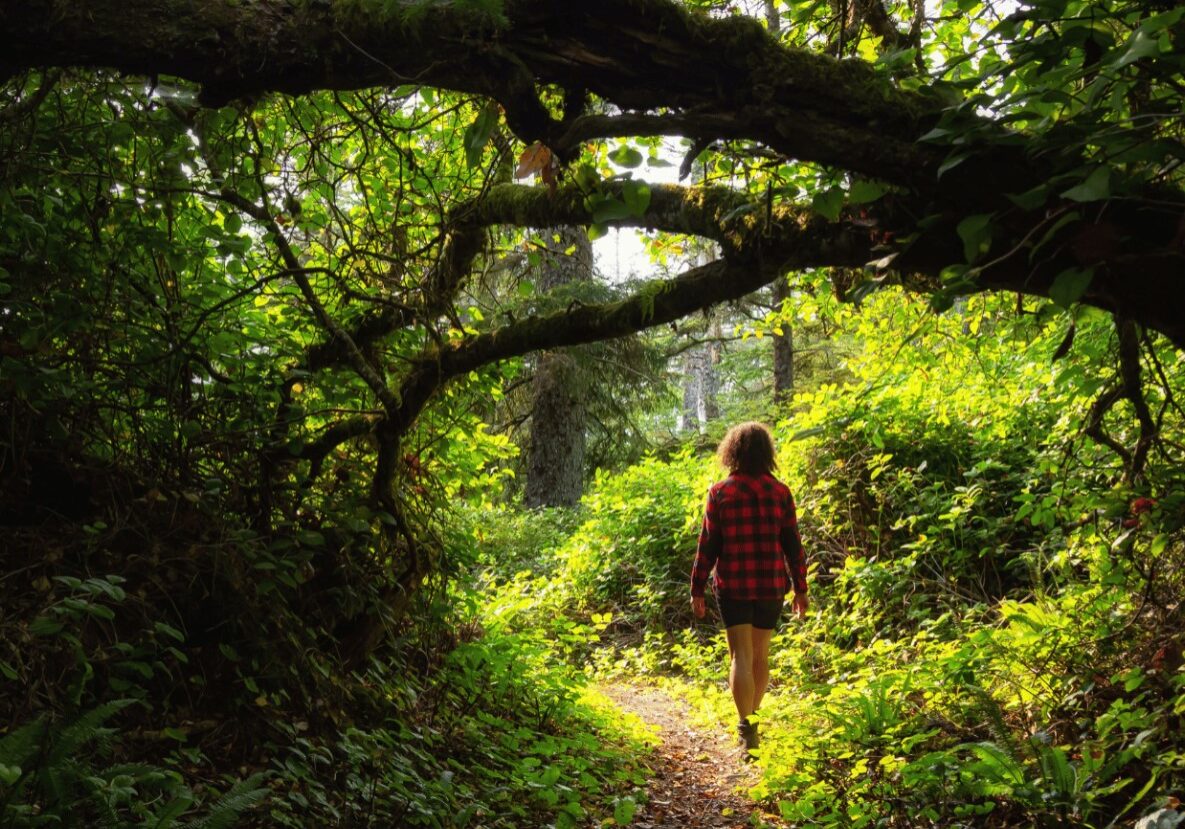
- Learn to switch off unwanted thoughts.
- Feel less angry, anxious, and sad.
- Increase self-worth and confidence.
- Overcome fear, self-doubts, and a wavering mind.
- Avoid stress and burnout.
- Get better sleep and rest.
- Strengthen the ability to control cravings, and give up addictions.
- Find peace and happiness in the present moment.
Build empathy. - Improve relationships.
- Find answers for important questions and decisions.
Nature Calm
"Listen to the sounds of the forest.
Count how many different sounds you can hear.
Can you hear the stillness that holds all the sounds?"
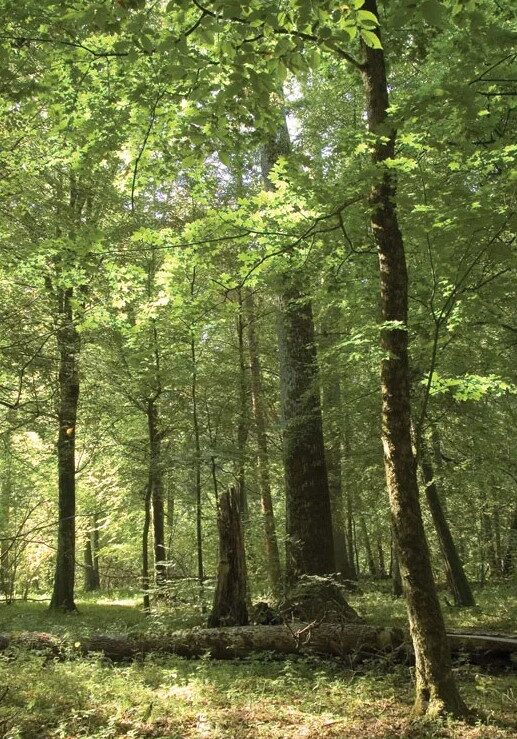
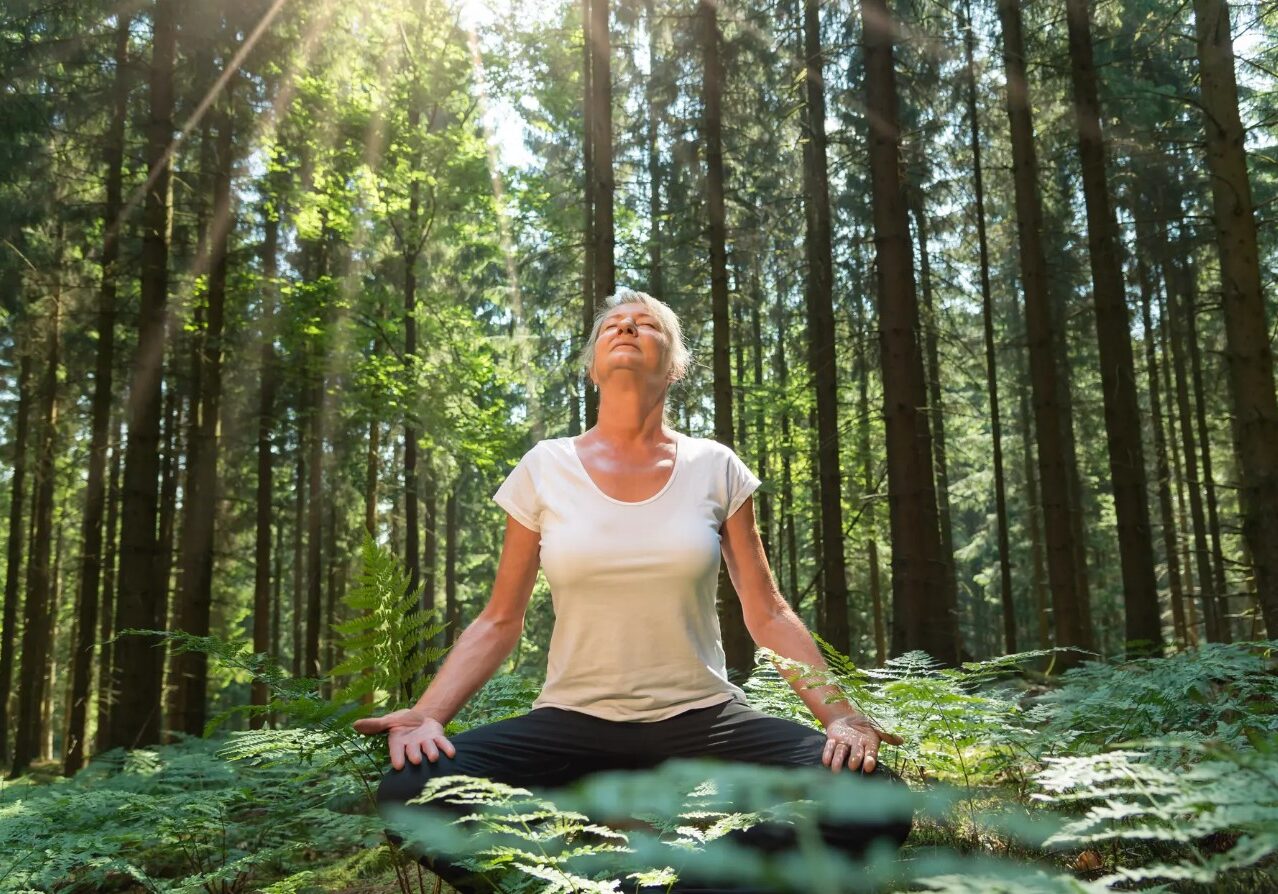
STAGES OF A FOREST MIND
Attention: Beginners and young children start with simple activities that focus on objects in nature to hold our attention and slow us down. By directing and controlling our attention we are training to control the direction of our thoughts and feelings.
Awareness: Once we are able to reach a calmer state of mind, we can grow our awareness. In the depths of the forest, one can sense the cycle of transformations that all life goes through. Things that we were. Things that we are yet to become. Just like a seed in the ground. Growing our awareness is growing our connection to all life.
Answers: Our mind gets a much-deserved rest so that it can apply itself with renewed energy and come up with surprisingly creative solutions. It begins to ask the right questions rather than simply seeking answers. The forest provides the light to spark new insights and learning which can give us a deeper understanding of life.
Benefits everyone.
Forest bathing has shown positive results across age-groups – from children to the elderly. It’s extremely helpful for parents as well as working professionals. As a company welfare program, forest bathing can be used for employee recreation, new employee training, and mental health management. However, as Prof. Dr. Iwao Uehara points out, it may not work for people who feel uncomfortable in the outdoor environment.
Forest Bathing works best as a form of prevention and a way to retain a healthy mind and body. It is not a replacement for medical advice or counselling for those who are seriously ill. However under a trained therapist, Forest therapy can be an important part of their treatment as well as recovery. Many people keep coming back after one time “exposure”.
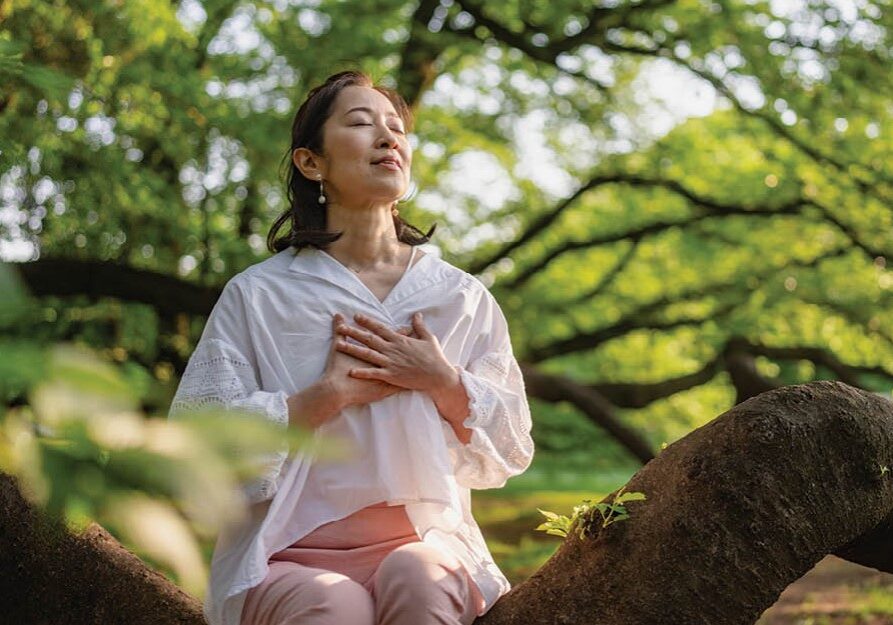
"The Forest holds answers to questions we have yet to ask."
Our mental health is a very precious gift.

For most people, the real value of our mind only becomes clear when things fall apart. Once a person becomes affected by any mental health issue, the road to recovery can take a lot of time, effort and money. Finding the right help and guidance is not easy and on top of that there is still a lot of social stigma attached to mental disorders.
Forest bathing offers a time tested approach. A large portion of the human evolution has taken place in nature. Nature connection is intrinsic to our behaviour, and is inscribed into our genetic code. It’s only during the last 200 years or so, that we have reduced our interaction with the outdoors. Going back to nature can bring us to a heightened state of sensory awareness and a feeling of alert calm. It is akin to a feeling of returning home and gives spontaneous rise to peace and happiness.
FOREST BATHING
to Better our Health
Our built environment, where we hear motors more than bird songs and feel plastic and silicone more than earth and flora, may feel natural to us today. However, we would do well to remember that our modern-day society constitutes a mere fraction of humanity’s presence on Earth.
For hundreds of thousands of years, long before the concept of civilization, we lived more seamlessly as a part of nature. It was only some 250 years ago that the Industrial Revolution gave us our newly manufactured existence, and it has not even been twenty years since urban settings outpopulated rural ones. For all the many differences we may see between us and our ancestors who roamed the wild, their experiences are etched into our DNA. Like petroglyphs, these experiences are still readable millennia later.
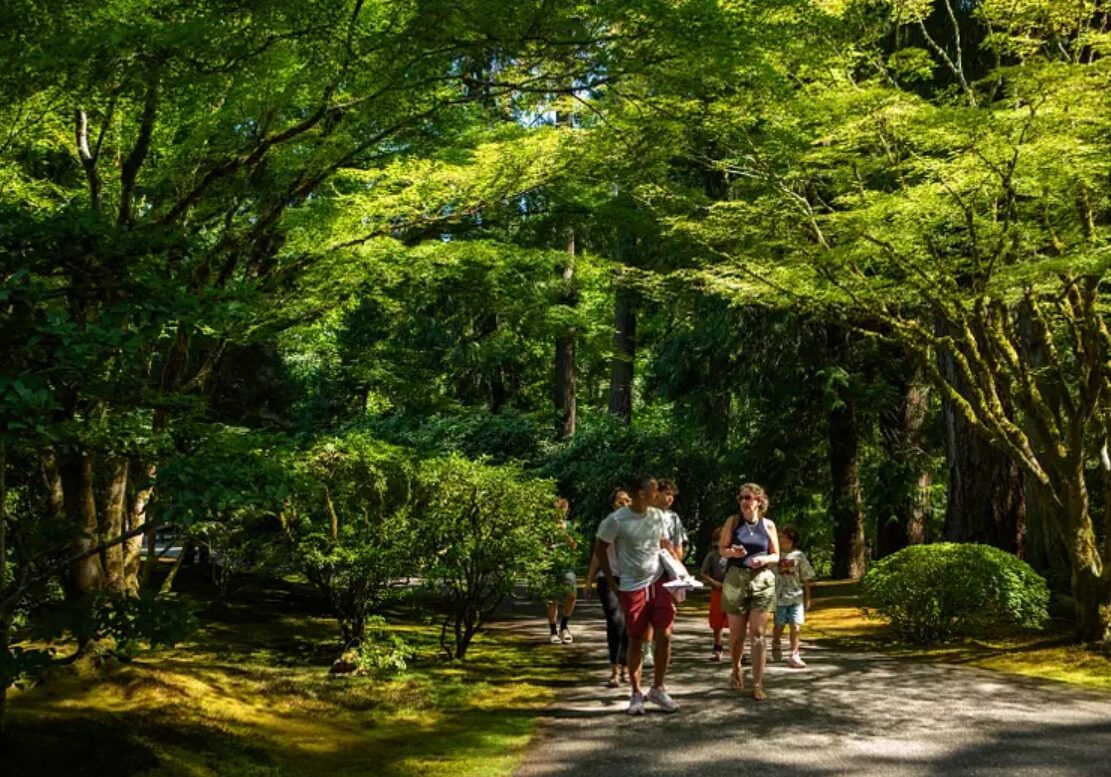
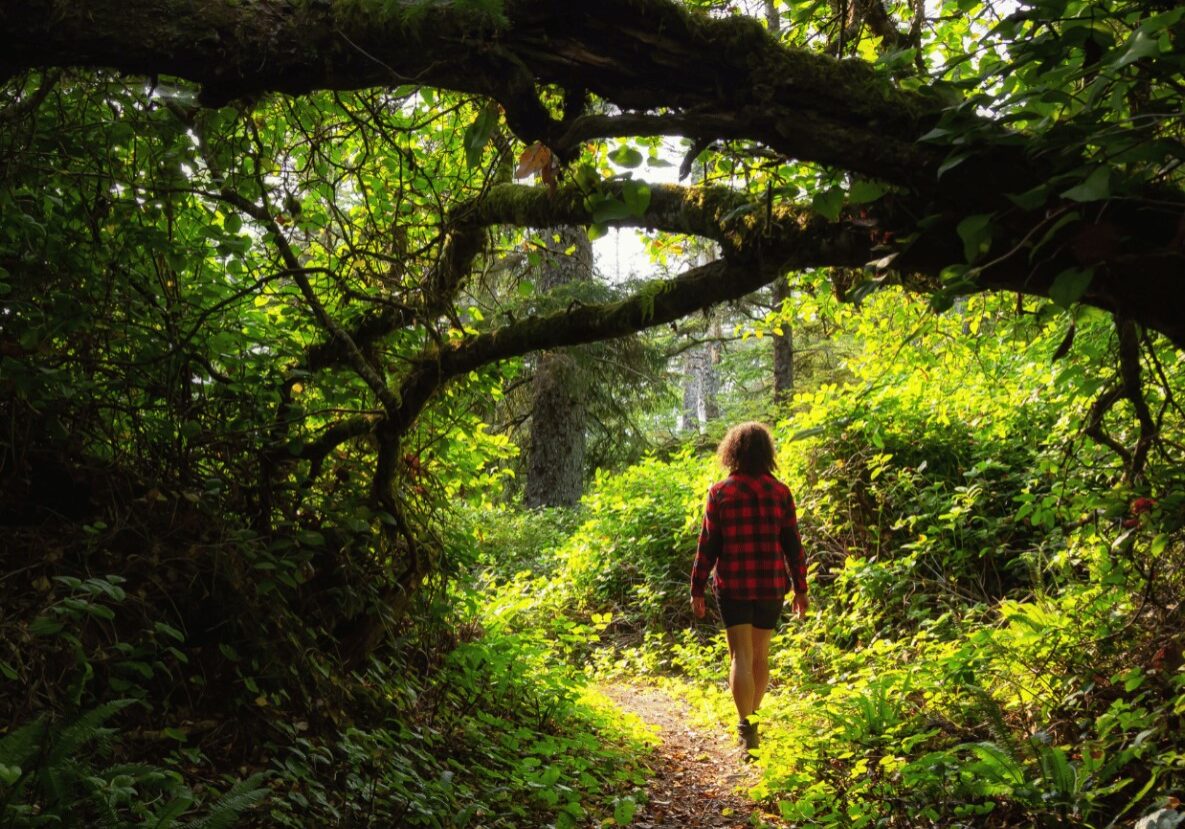
Our built environment, where we hear motors more than bird songs and feel plastic and silicone more than earth and flora, may feel natural to us today. However, we would do well to remember that our modern-day society constitutes a mere fraction of humanity’s presence on Earth.
This helps to partially explain the power of the nature and gardens. In such places, the balance tilts back to a comfort we once knew so well. In a space like the Alberta Botanic Garden, stones, water, and plants harmonize beneath a canopy of fir and cedar. The curated nature here is shaped by humans, but it also shapes us—it softens our tension, mitigates our anxieties, and satisfies our fundamental desire to feel we belong. Gardens are something more than an adorned landscape or light trifle to kill time—they are a complement to preventative physiological and psychological healthcare.
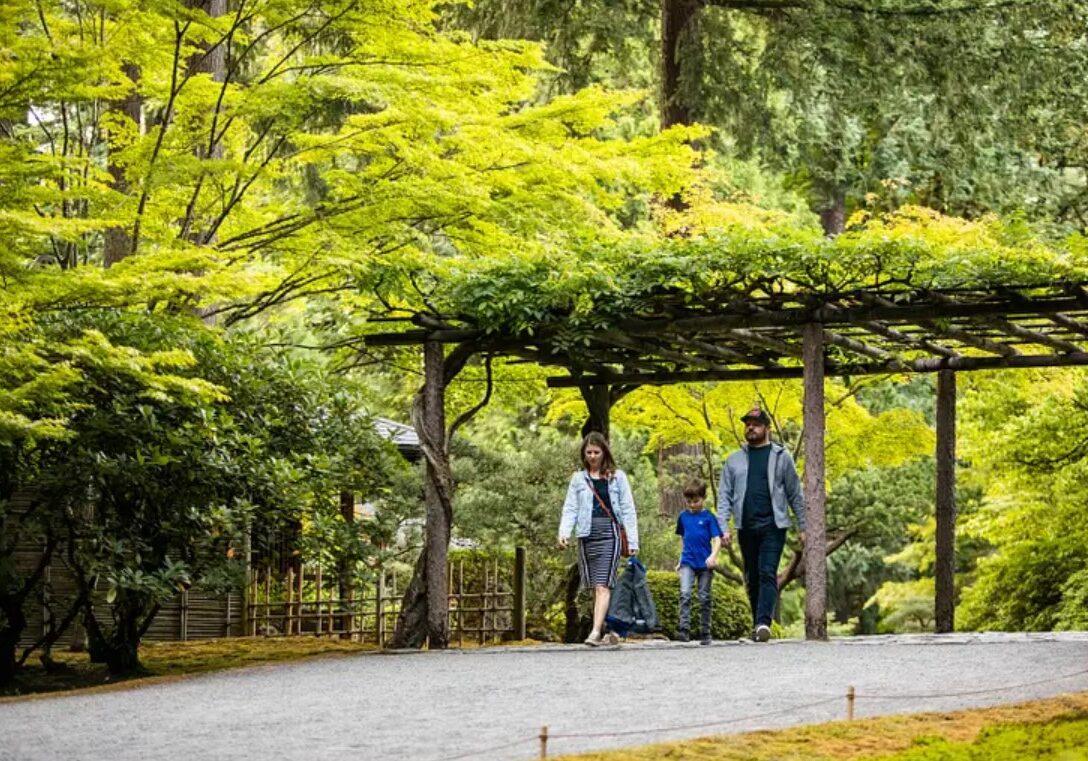
Soaking in nature in the Garden.
A family walks through the Alberta Botanic Garden
Of the more formalized approaches to leveraging the special qualities of nature, forest bathing, or as it was first coined in Japanese, shinrin yoku, has started to grow momentum in the American cultural zeitgeist. Only popularized as a term in 1982 by Tomohide Akiyama, then Director of the Japanese Forestry Agency, it can be thought of as the intentional practice of surrounding oneself in nature and being mindful of each sense—something more conscious and unplugged than staring at a smartphone underneath a tree. The term may be relatively young, but the concept is something that dates back throughout the Holocene Epoch in Earth’s geological history. Scholarly work suggests that Cyrus the Great, founder of the Persian Achaemenid Empire in 550 BCE, built gardens with the intention of improving his peoples’ health.
This pursuit of mindfulness is not necessarily something that always happened because of high decree. In the American concentration camps of Japanese and Japanese Americans during the World War II era, incarcerees would build Japanese gardens on their prison grounds, seeking emotional relief in the aftermath of their livelihoods being stripped from them.
Organizations such as the Association of Forest and Nature Therapy have worked to professionalize these activities by offering certification and training, however it is still a burgeoning field. A systematic review of studies on shinrin yoku have found that it has been offered in increments as short as fifteen minutes and as long as nine days and manifested in a wide variety of activities, including walking, meditation, and even arts and crafts.
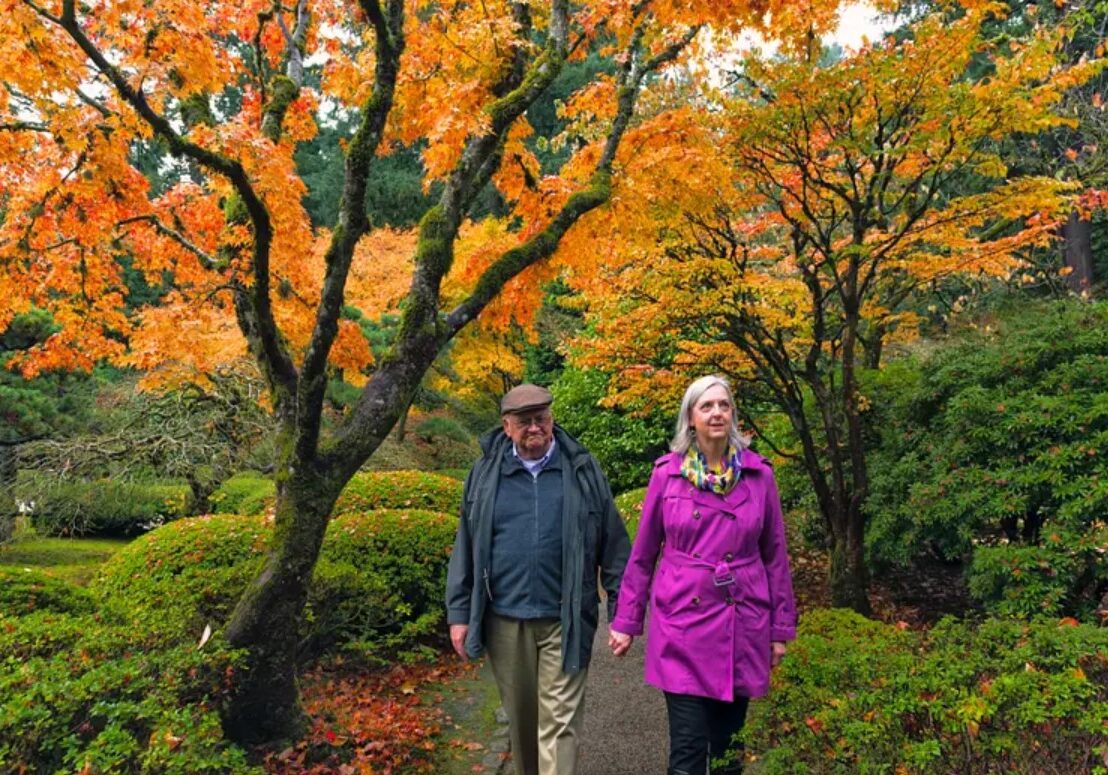
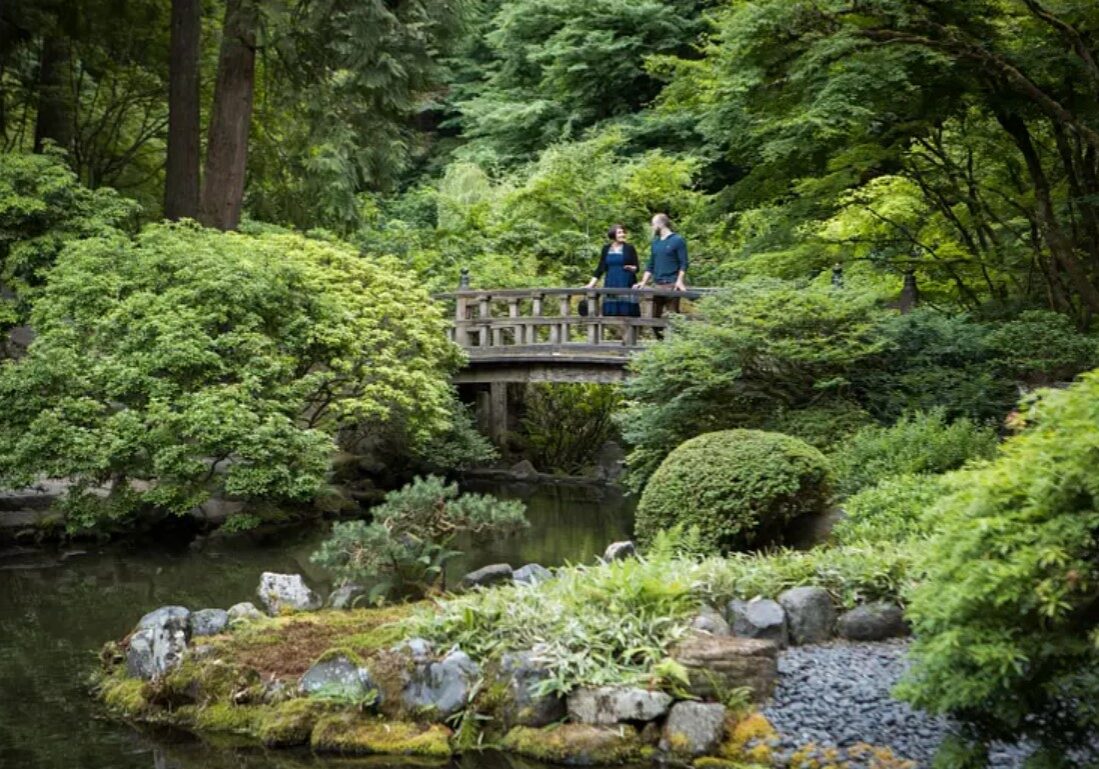
As its format is still being shaped by its practitioners, the results of forest bathing are coming into clearer view. Research has indicated that a variety of forest bathing activities are associated with positive health outcomes and reveals that even different logistical approaches, such as the length of time spent or specific actions (e.g., walking, sitting) can correlate to beneficial outcomes. The practice is connected with reductions in heart rate, stimulation of the parasympathetic nervous system (i.e., a person’s “rest and digest” processes), lowered blood pressure, and increases in natural killer cells.
Beyond the physiological, studies have noted that there are mental health benefits, as well. A systematic review from Antonelli, Barbieri, and Donelli noted a correlation between shinrin yoku and reduced stress levels, improvement in the mindset of patients with post-traumatic stress disorder, better sleep for individuals with menopause-related insomnia, better moods for those addicted to alcohol, and lessened anxiety.
It is essential to note that in a world being besieged by spurious and unfounded claims on science, the apparent preventative health care benefits of forest bathing does not mean it is a miracle drug alternative to treatment from medical professionals. Positive findings aside, the science is still emerging and is yet to have been globalized; there are few studies being conducted outside of Asia.
Furthermore, until a standardized practice has reached some kind of consensus, the fluid definition of forest bathing means it can be so many things and also nothing at all. There are also innumerous confounding variables; it is unclear exactly how much the environment or cultural history of a given region may overstate or understate forest bathing’s potential as a kind of medical treatment.
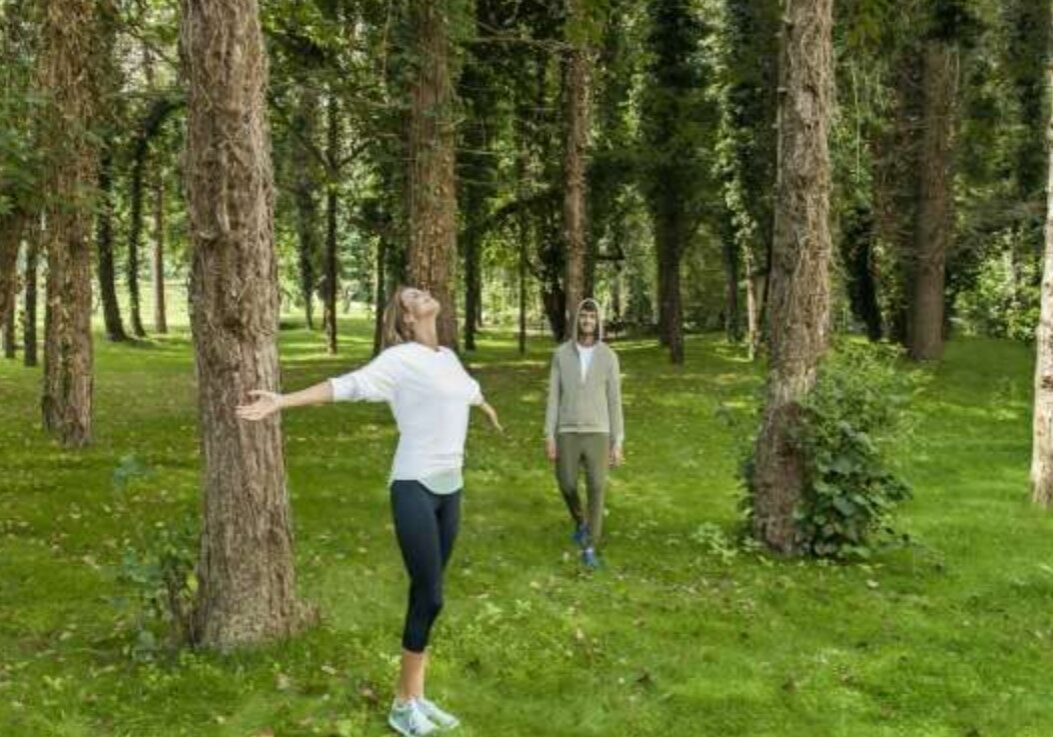

Benefits of Forest Bathing
This important detail noted, the benefits of shinrin yoku are gaining notice and support from officials. The term was initially a marketing exercise to connect self-care with tourism, but is now a tool in Japan’s national health program. Dozens of forest medicine centers are coordinating primary care centers across the nation’s major cities.
In 2008, the nonprofit Forest Therapy Society of Japan was established to monitor scholarly work on the subject, promote it to the public, and administer qualification exams for practitioners. They worked in partnership with institutions both in and outside of government to form a certification process for forest therapy bases, something the Japanese government had initiated as early as 2005. Since 2020, at least sixty-five bases have been established. In the United Kingdom, the government agency Forestry England has partnered with The Forest Bathing Institute to offer forest bathing sessions.
Bringing nature to everyone
Despite its nascence, forest bathing is becoming more accessible in more places. The American Association of Nature and Forest Therapy Guides and Programs, founded in 2012, offers a searchable network of recognized forest bathing practitioners as well as a six-month certification pathway that includes remote and in-person training. Because of their national network, many public gardens are likely within proximity to these professionals.
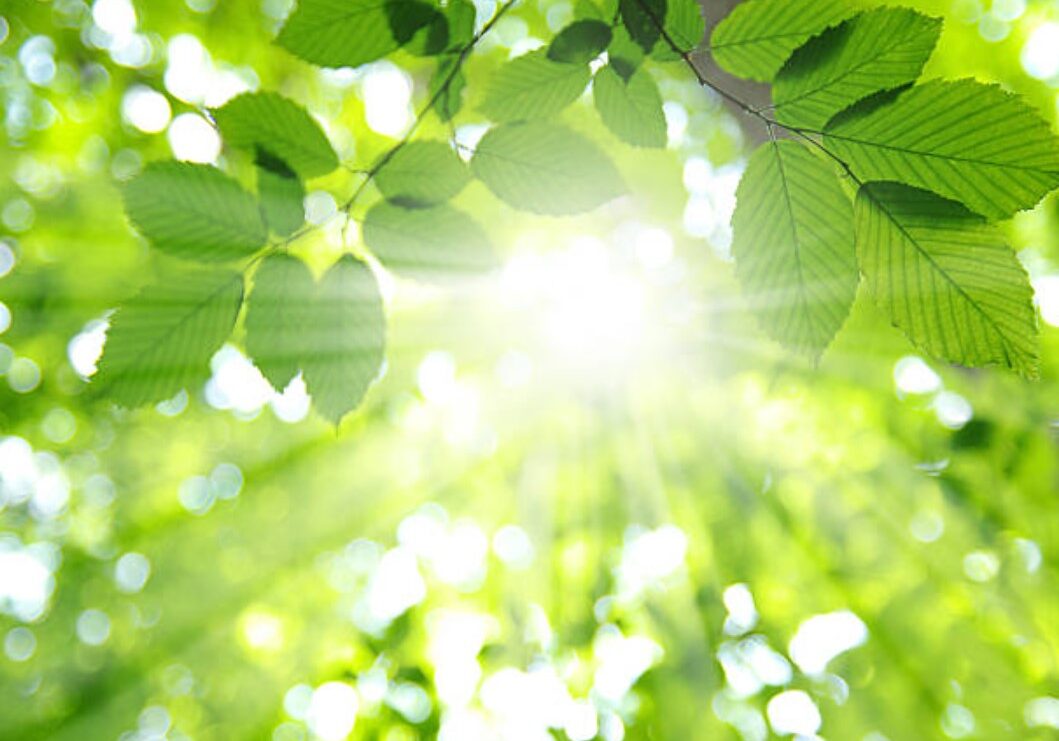
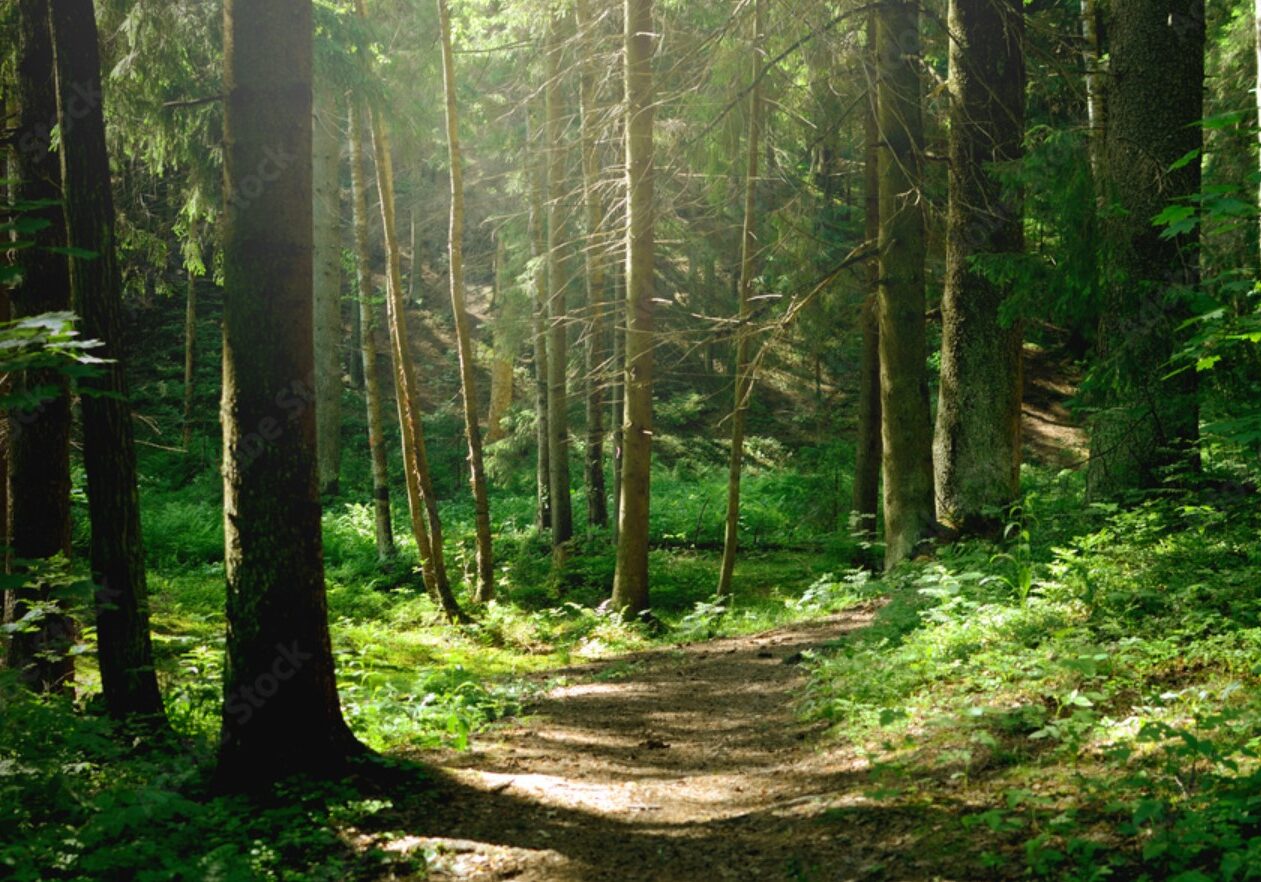
Immersed in the famous towering trees of the Northwest, offers “mindfulness tours” that aligns with the spirit of forest bathing. Not strictly a meditation experience, but led by one with training in that field, attendees are guided on a contemplative stroll winding through spaces specifically designed to evoke serenity. The guests are asked to make observations about and connect themselves to the landscape. Over the course of the hour, gentle guidance steers the mind away from the obligations and pressures of life to the peace-inducing gifts of nature.
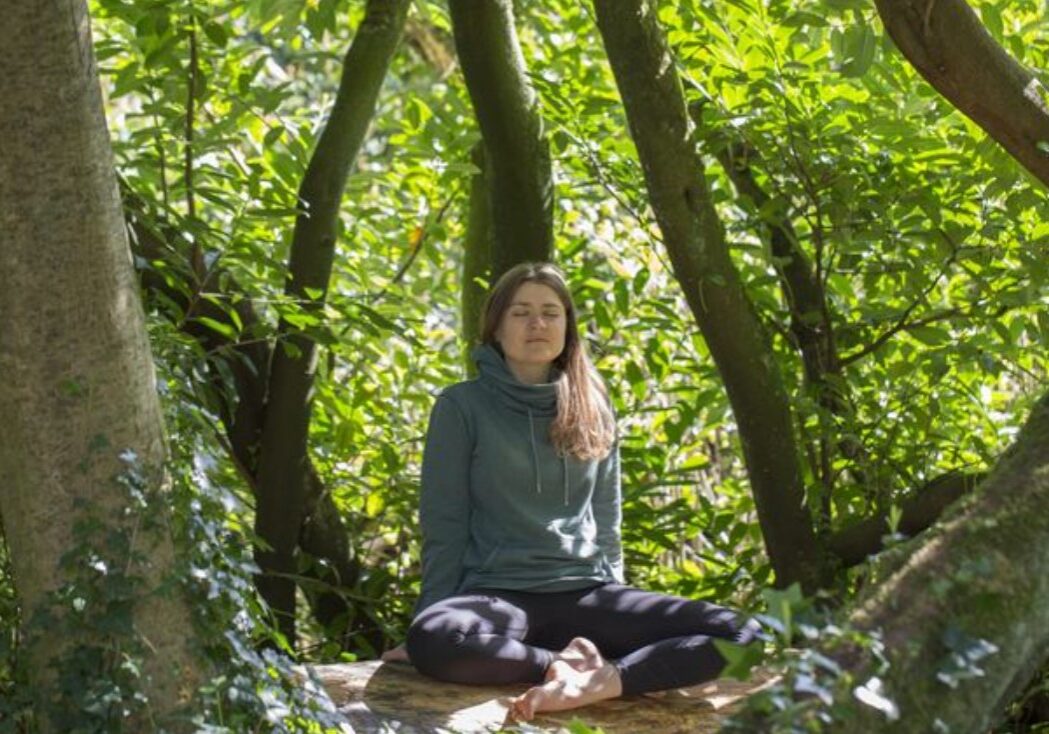
Many different ways of Forest Bathing.
Forest bathing programs can find a home within any public garden. It is not a strenuous hike, nor does it require one to be on their feet, so it is something individuals with mobility concerns can enjoy. Furthermore, because public gardens are attractions meant for all audiences, they provide a simpler entry into nature than a hiking trail in the wild. Dr. Qing Li of Tokyo’s Nippon Medical School writes in his book, Forest Bathing, that a vast array of different activities can qualify under the principles of shinrin yoku, including walking, yoga, eating, meditation, art classes, and plant observation.
Our human tendency to affix labels on the world around us can sometimes unnecessarily limit our perceptions of a person, place, or, in this case, an activity. Just as forest bathing does not require a water-filled bathtub, neither does it require an actual forest. Across the United States, other gardens offer forest bathing and similar nature-based therapy programming in environments that, on first blush, don’t evoke thoughts of woodlands.
RoHoEn, the Japanese Friendship Garden of Phoenix, for example, offers a beautiful landscape and certainly has lovely trees, but it is situated in an arid landscape under the blue expanse of an Arizona sky. They nevertheless offer forest bathing led by Association of Nature and Forest Therapy-certified nature guides.
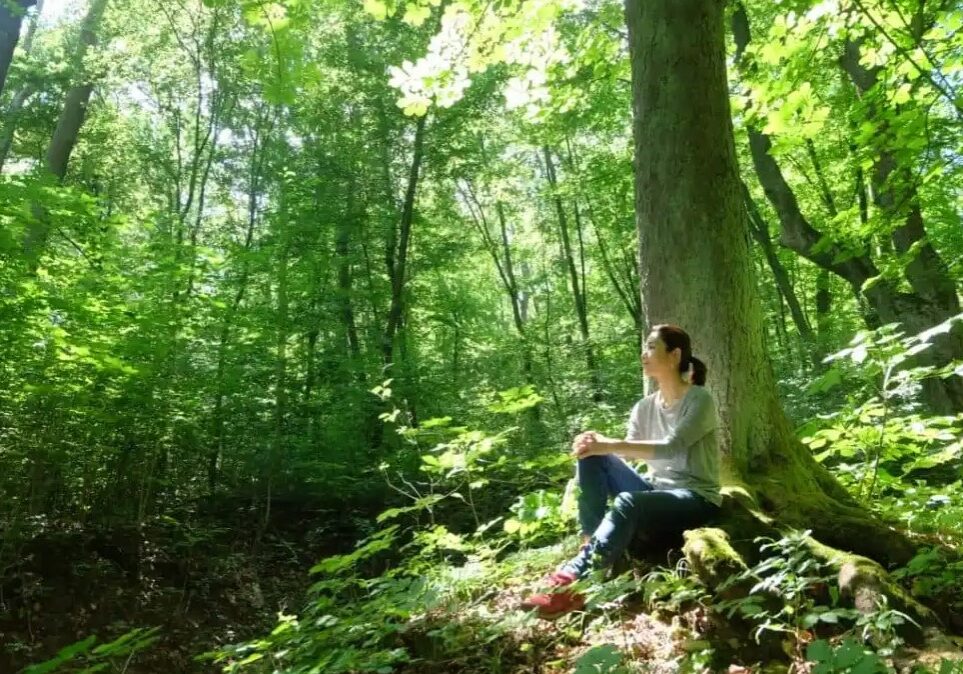
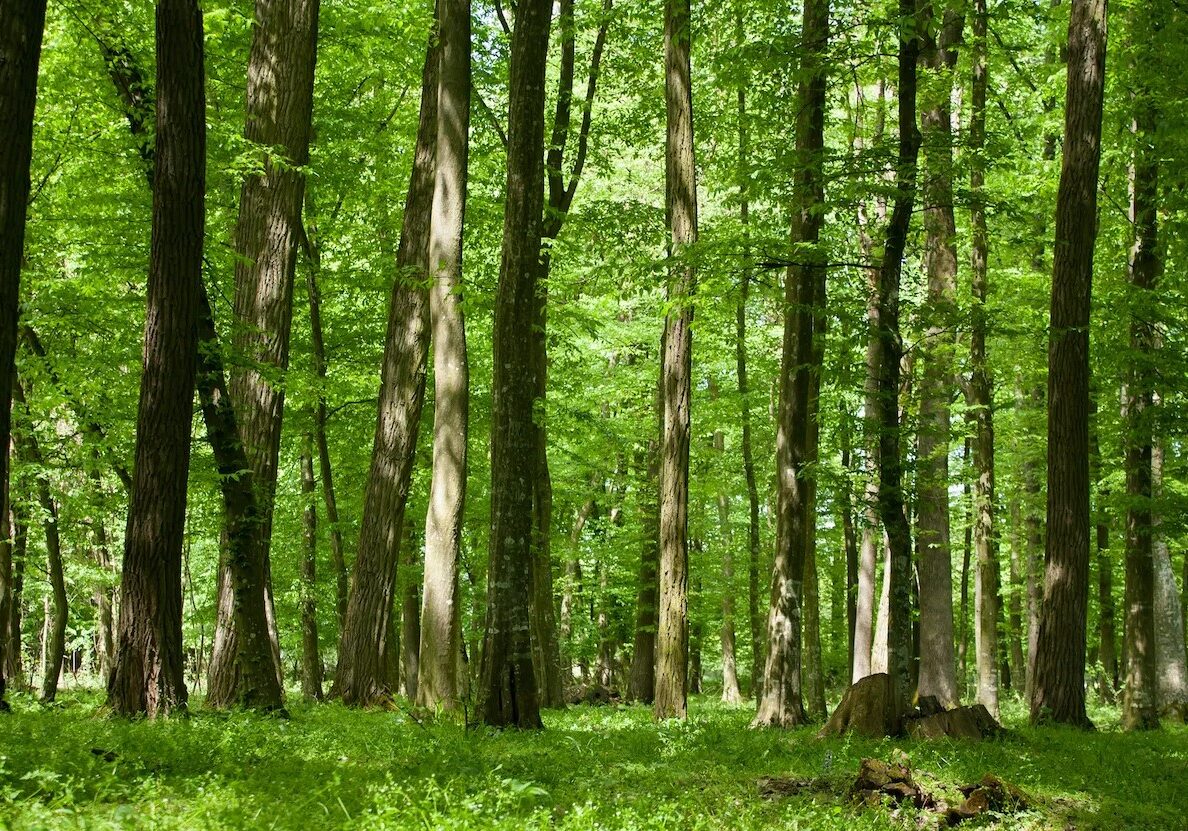
Additionally, a public garden need not be Japanese in its design and influence to offer shinrin yoku. We demonstrate this principle by offering forest bathing walks similar to those being offered at Alberta Botanic Garden—guided strolls that “help participants move beyond the chatter of the thinking mind and find a deeper sense of embodied engagement.”
The quintessential trait of shinrin yoku is mindfulness in nature, not the specifics of the vegetation. Gardens in any corner of the world can offer this chance to be immersed back in the world that may have vanished from our view, but never left our makeup.
